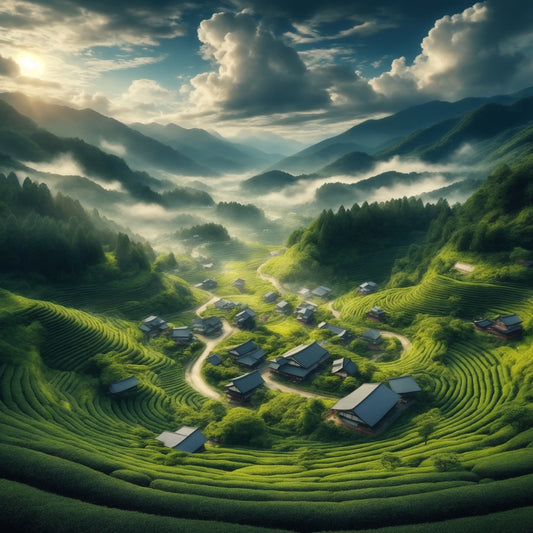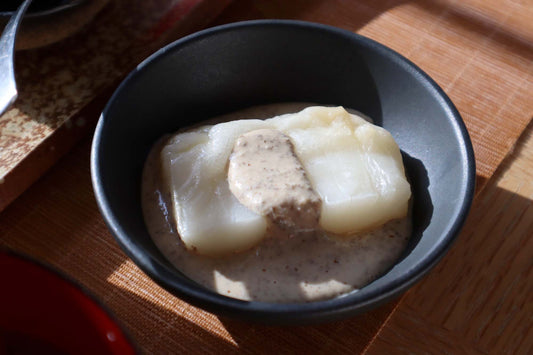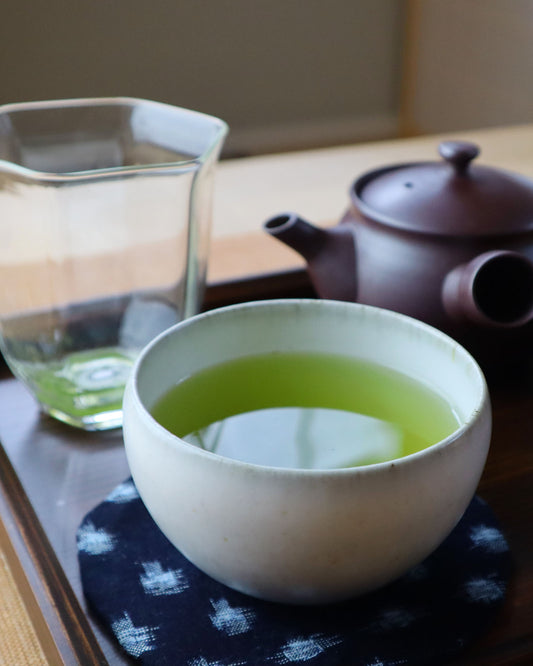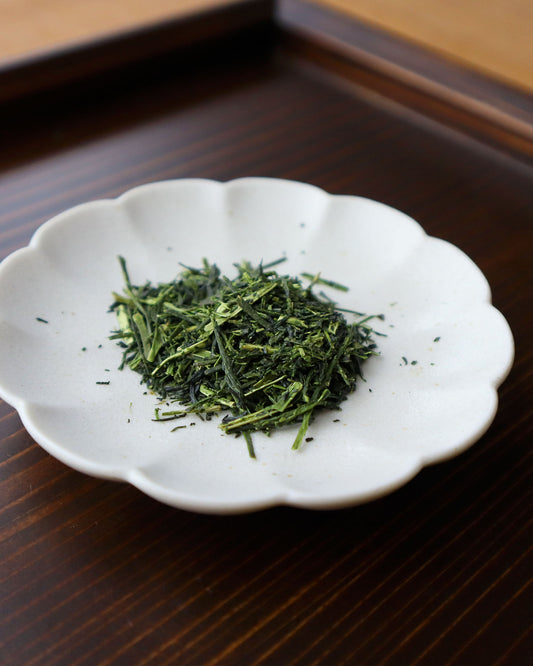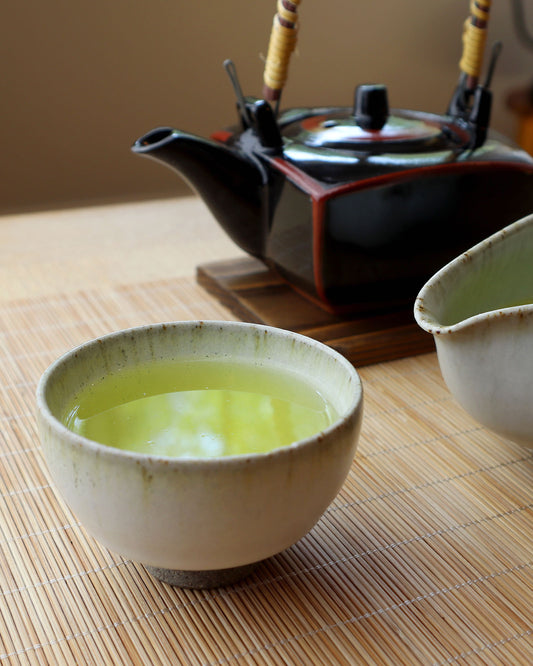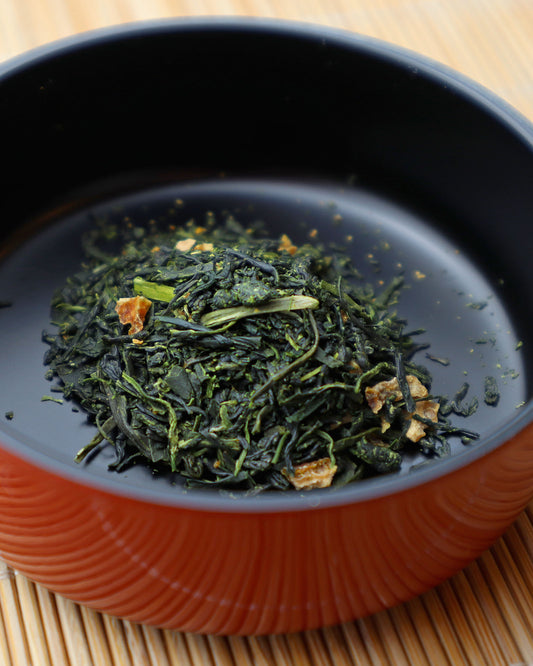Right now, all across Japan, it's the shincha season, when the new tea is harvested.
Tea farmers put their hearts into nurturing their tea farms for the whole year, waiting for this season when the young leaves are perfect for picking. This year, we had the privilege of visiting the Saito family deep in the mountains in the famous Honyama region of Shizuoka, to help with their hand-picked shincha harvest.

The owner, Katsuya-san, carefully chooses the timing for harvesting, based on the weather and daily checks on the leaves.

The tea trees we picked this time were younger trees of the Saemidori varietal, a rare variety that produces aromatic and sweet teas. We worked together with some local volunteers - veteran village grandmas - chatting happily while working, and expertly plucking the small, delicate leaves at a pace we could never keep up with. High in the mountains with Mt. Fuji in the far background, and the ocean way out the other way, we plucked along and sweated in the sun. With the soft "pluck pluck" of the hand-picking and the idle chatter of the ladies, topics ranging from what mountain herbs could be foraged this season to how one boils bamboo shoots properly to local gossip on the neighbors, we fell into a rhythm with the birds and the mountain breeze. As each topic ended, a silence falls, and our attention shifted back to the crisp sound of plucking leaves.

It's physically demanding but mentally invigorating work. You definitely feel it in your body, and especially in your back! But the rhythm of the harvest is easy on the mind, clearing ours of most thought. The grandmas remind us not to work too hard. Just when fatigue would start to set in, a gentle voice would say, "Let's take a break." We pause, resisting the urge to continue, and rest.

There was a shade cover setup nearby but sometimes we'd just plonk down right beside the rows of tea trees, sharing out cold tea or snacks that everyone brought. Some rice balls with freshly made bamboo shoot, or tempura-fried tea leaves, or pickled foraged mountain herbs. Most things came from the land, with very little from a market of any kind.
These short breaks, along with the freely given food and a hearty lunchtime of mountain vegetable dishes and rice balls brought by Katsuya-san's daughter, Yuko-san, replenished our energy. We try to pick around 5 kilograms of tea leaves each per day, but the leaves are small and we don't quite make it. When the sun starts to move down into the mountains around 5pm, the grandmas gently disband without preamble: the day's work is done.

After driving the harvest down to the farm, it's a race against time to clean, steam, shape, and dry the leaves. The process takes around five hours, so it finishes around midnight. It's a busy time during the harvest, with demanding hours, but the approach to the work is soft and measured, without stress.

Two days later, we say our goodbyes. We managed to clear the hand-pick fields, with a small but precious harvest. There's plenty more harvesting to do, including the Saito's gyokuro and hand-machine picked fields, but they're not quite ready to pick and we have to be off. It's thanks to the kindness of the Saito family and the local community, welcoming us without hesitation and allowing us to join in the work like we'd been there all along. The tea from the Saitos is crafted from this warmth and connection with their land.

Although there isn't enough of this batch to offer for sale, we do carry some of Saito's other excellent teas. Check out our Harumoegi and Honyama Hojicha if you're interested in trying some of the teas from this farm.

